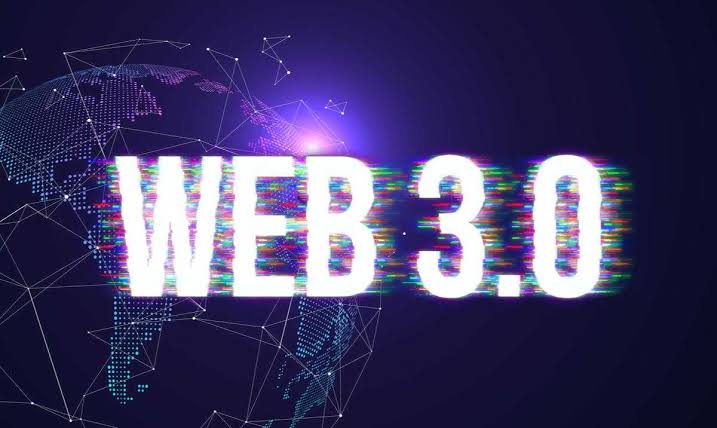When you consider the revolution of the internet overtime, it’s clear that it is a perpetual concept. Web 3 is the third generation of the World Wide Web, and it’s poised to be a major upgrade over the current web, as we know it. While the first two iterations of the web were mainly focused on delivering information and content, Web 3 is all about bringing people and ideas together.
More importantly, Web 3 is pioneering an internet for the people by the people. It means a more secure, private, and decentralized internet experience for its users. With Web 3, users will be in control of their data and identity unlike in the previous versions where large corporations held that power. But that’s not all – let’s discuss how others came and went, and why the Web 3 paradigm might just be here to stay.
Web 1, Web 2 & Web 3 Including Their Differences
The first generation of the web, also known as Web 1, was all about making information accessible to everyone. It gave birth to companies like Google and Yahoo who built search engines that helped users find what they were looking for online. Web 1 was based on the centralized model, which meant that a single entity controlled all the data. This made it easy for hackers to exploit the system and steal user information.
Web 2 came along and improved upon the first iteration by making the web more interactive. Services like social media and blogs allowed users to share their thoughts and ideas with the world. Web 2 also gave rise to companies like Facebook and Twitter. While these platforms have been incredibly successful, they have also come under fire in recent years for their centralization of power and data. This has led many users to seek out alternatives that are more privacy-focused.
Web 3 opens up a whole new world of possibilities for developers to create applications and services that were not possible before. With the introduction of new technologies like blockchain and decentralized storage, developers will be able to build applications that are more secure, private, and censorship-resistant.
The Origin of Web 3
In 2014, a group of developers and entrepreneurs came together to form the Web 3 Foundation. There is no one person or organization that can be credited with inventing Web 3. Rather, it is a collective effort by many individuals (notably Ethereum co-founder, Gavin Wood) and groups who are working towards building a more decentralized internet. Some of the key players in the development of Web 3 include the Ethereum Foundation, Mozilla, and the World Wide Web Consortium (W3C).
These platforms provide a level playing field where everyone must follow hard-coded rules no single entity can control yet still be trusted because users are linked together by consensus protocols which ensure data integrity across separate nodes in the network.
The Web 3 Effect On Both Personal & Professional Growth
Web 3 refers to the third generation of the world wide web, which enables peer-to-peer transactions and payments without a middleman. It is powered by decentralized technologies, such as blockchain and cryptocurrencies. Web 3 is still in its early stages, but it has the potential to revolutionize the internet as we know it. Some of the ways of Web 3 contributes to your growth includes:
User empowerment: With web3, users will have more control over their data and how it is used. Decentralized applications (dapps) will give users the ability to interact directly with each other, without the need for intermediaries.
Greater security: The decentralization of web3 will make it more resistant to hacking and censorship. Additionally, the use of blockchain technology will help to protect user data.
Improved usability: One of the goals of web3 is to make decentralized applications as easy to use as traditional centralized applications. This will make it easier for people to adopt and use dapps on a daily basis.
Increased privacy: With web3, users will have more control over their personal data. They will be able to choose which applications have access to their data, and they can also choose to share only anonymous data.
These are just some of the potential benefits of web3. As the technology develops, we are likely to see even more advantages emerge.
How Do You Use Web 3 In 2022?
Thanks to the development of Web 3 technology, we will soon be able to enjoy a more immersive and personalised online experience. So how can you get started with Web 3? Here are three simple steps to get you started:
1. Firstly, make sure your web browser is up-to-date. Web 3 technology is not yet compatible with all browsers, so you’ll need to use the latest version of Safari, Chrome, or Firefox.
2. Secondly, download a web 3-compatible wallet such as MetaMask or Coinbase Wallet. These wallets will allow you to store and manage your digital assets in a secure way.
3. Finally, start using decentralised apps (DApps). DApps are applications that run on a decentralised network, which means they are not controlled by any central authority. Some popular DApps include CryptoKitties, Augur, and MakerDAO.
By following these three simple steps, you can join the rest of the pioneers in Web 3!
This is a Contributor Post. Opinions expressed here are opinions of the Contributor. Influencive does not endorse or review brands mentioned; does not and cannot investigate relationships with brands, products, and people mentioned and is up to the Contributor to disclose. Contributors, amongst other accounts and articles may be professional fee-based.

